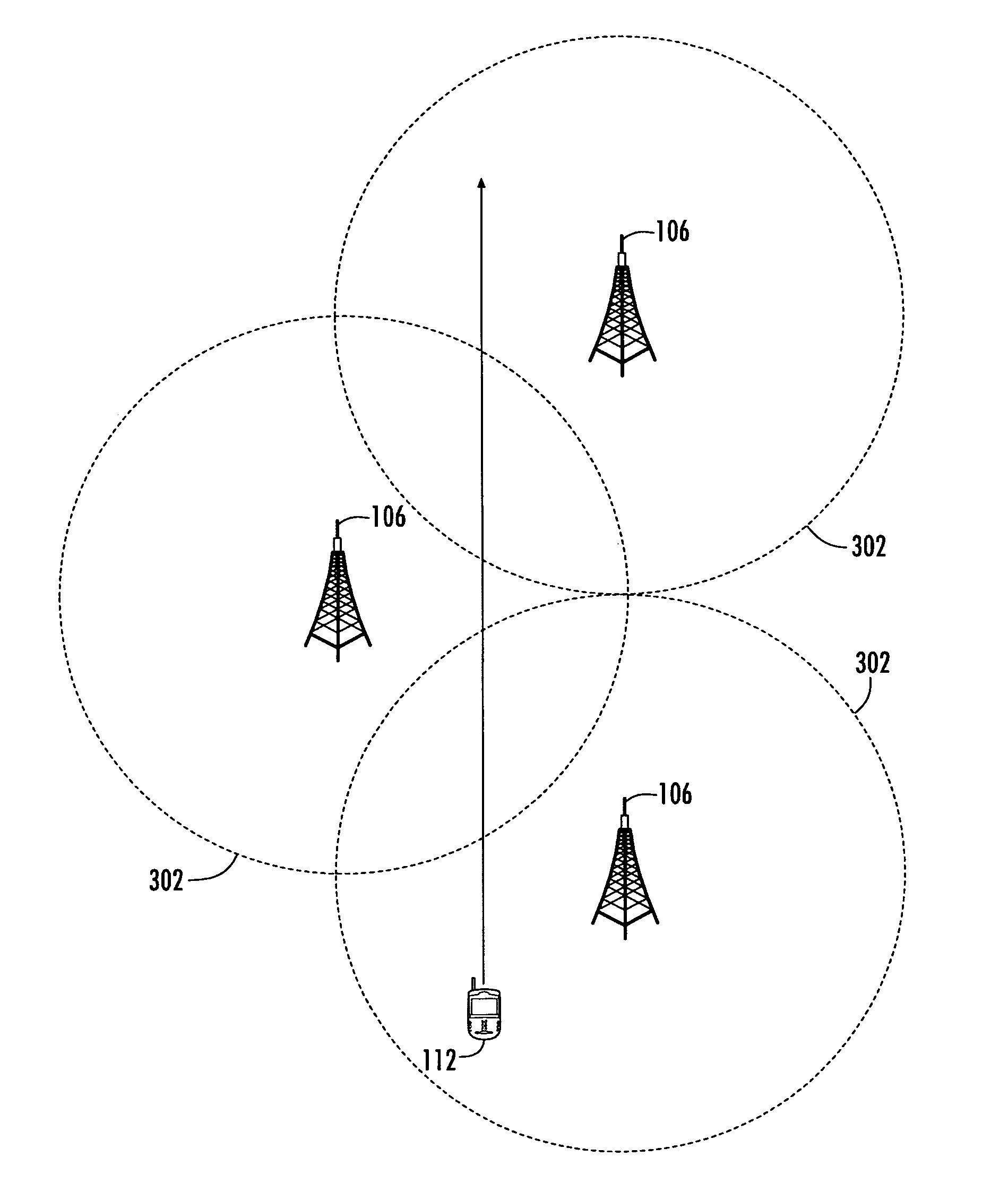Methods and apparatus for dynamic identification (ID) assignment in wireless networks
a wireless network and dynamic identification technology, applied in special services for subscribers, channel coding adaptation, eavesdropping prevention circuits, etc., can solve the problems of multiple levels of traffic necessary to affect such repeated registrations, the inability to obtain subscriber credentials before the subscriber has been properly identified, and the frequent exposure of sensitive user information
- Summary
- Abstract
- Description
- Claims
- Application Information
AI Technical Summary
Benefits of technology
Problems solved by technology
Method used
Image
Examples
example operation —
Example Operation—
[0087]The following discussion illustrates various useful aspects of the present invention by combining the unpredictable properties of multipath over-the-air (OTA) channels with the exemplary cellular architecture, to provide anonymous subscription-less data services.
[0088]Referring now to FIG. 7, a cellular communication system 700 exploits a wireless link between User Equipment (UE) 702 and Base-Station (BS) 704. Each communication link requires a Unique ID. To maintain anonymity, only the UE and the Base-Station should maintain the same user ID. For reasons previously cited, the ID assignment is preferably not transmitted over the air interface.
[0089]Unlike the prior art (e.g., UMTS AKA, etc.), the present invention provides significant improvements by inter alia, firstly avoiding communication overhead and latency required for a BS 704 to assign a User ID to a device 702. Secondly, the present invention assigns a User ID without transmitting any user informati...
PUM
 Login to View More
Login to View More Abstract
Description
Claims
Application Information
 Login to View More
Login to View More - R&D
- Intellectual Property
- Life Sciences
- Materials
- Tech Scout
- Unparalleled Data Quality
- Higher Quality Content
- 60% Fewer Hallucinations
Browse by: Latest US Patents, China's latest patents, Technical Efficacy Thesaurus, Application Domain, Technology Topic, Popular Technical Reports.
© 2025 PatSnap. All rights reserved.Legal|Privacy policy|Modern Slavery Act Transparency Statement|Sitemap|About US| Contact US: help@patsnap.com



